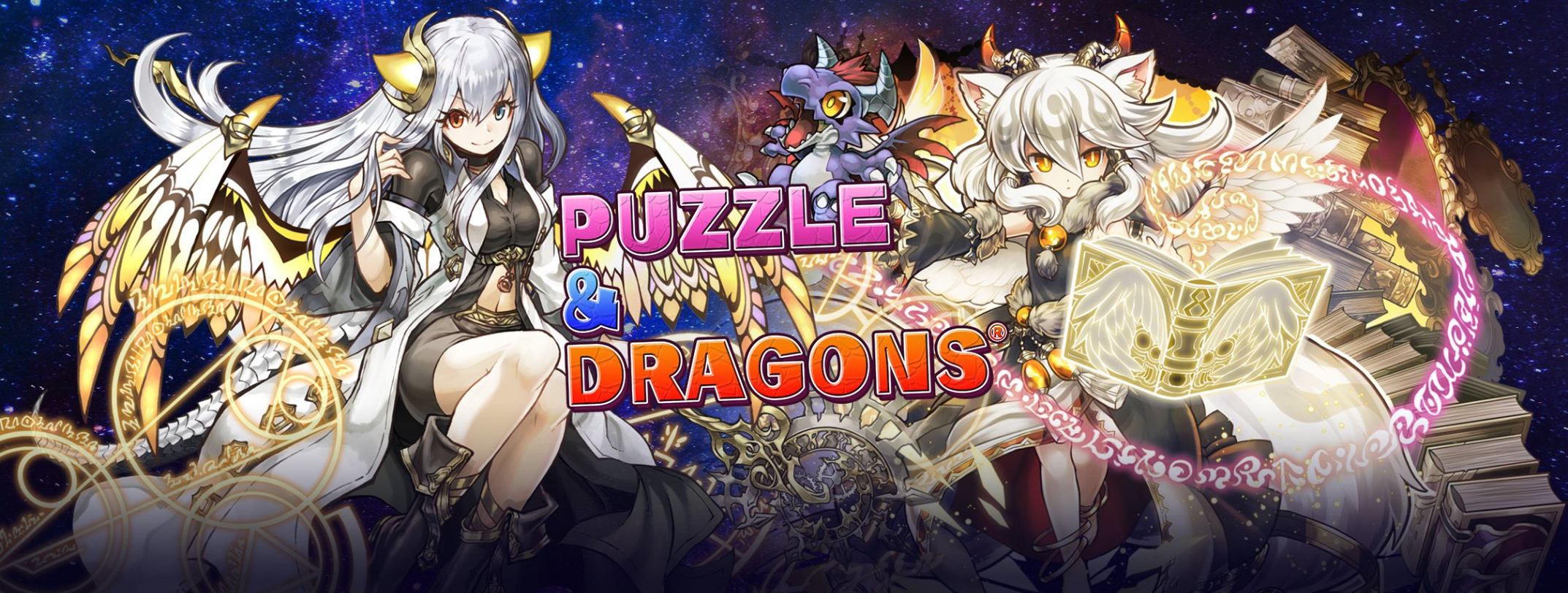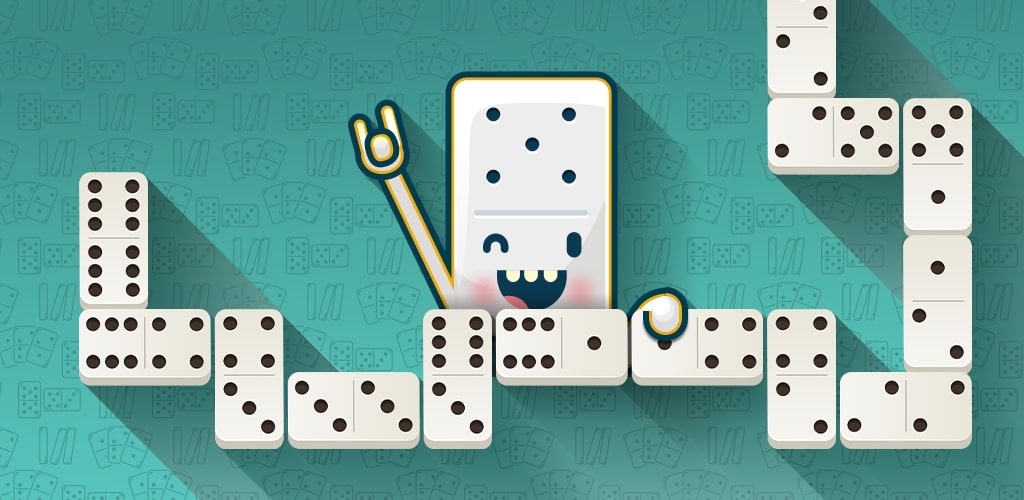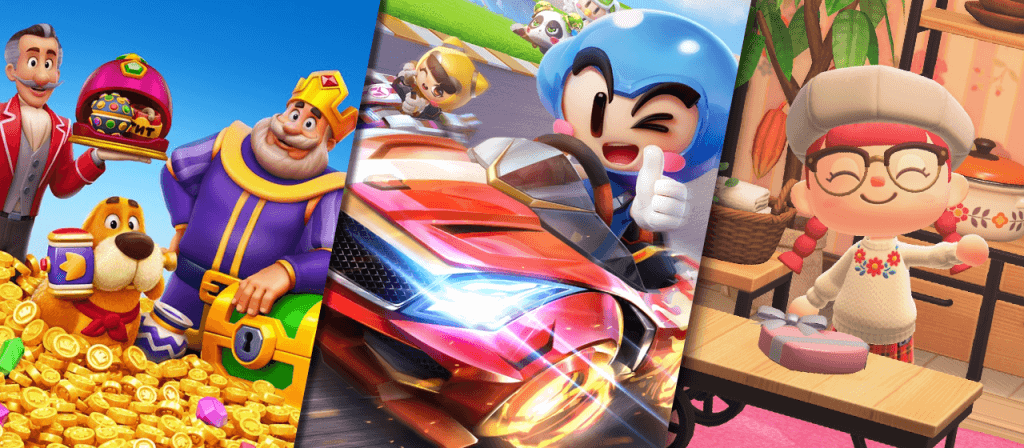The mobile game market has started to hit its early teens, as title after another reaches its 10th-anniversary mark. Japan, in particular, is known to really hold onto its past success titles: games like Monster Strike, Fate/Grand Order, and Dragon Ball Z Dokkan Battle frequent the top 200, some even the top 10.
In this blog post, we want to take a closer look at one of such stories, GungHo Online Entertainment’s Puzzle & Dragons (パズル&ドラゴンズ). Even after hitting its 10th anniversary on 20th February, the game has kept its original aesthetic almost intact but has seen some improvements throughout the years, which we will go through in this deconstruction. In this post, we also take a brief look at the Puzzle RPG genre in Japan and peek at how the game has fared in the international market.
What is a Puzzle RPG exactly?
Puzzle RPG is a Midcore subgenre that combines the addictive and satisfying match3 core gameplay to a heavy collecting and development meta. Motivations data for the subgenre showcases that players who like to pick up a Puzzle RPG title tend to prefer collecting and exploration combined with progression and completing milestones over social elements, customization, and resource management.
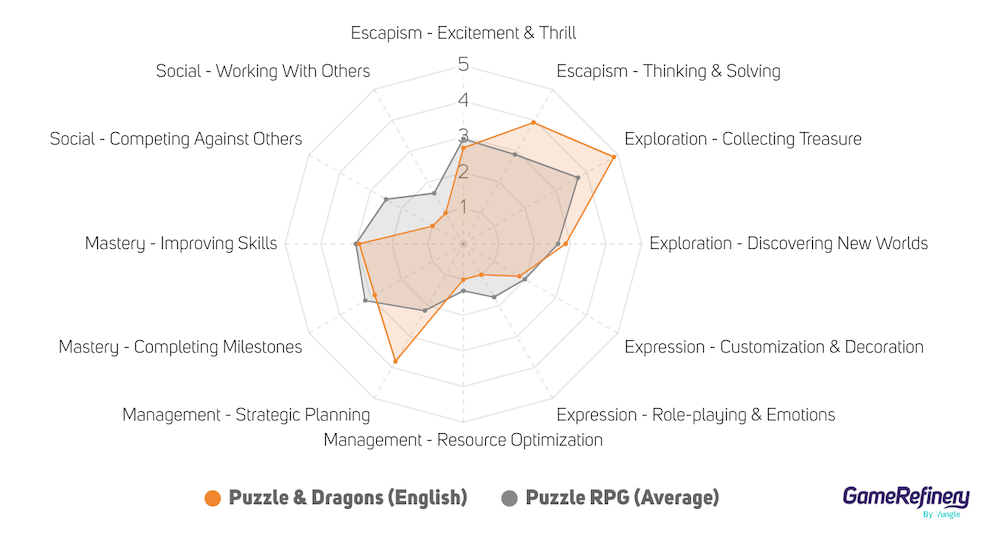
The subgenre is much more popular in Japan than in the US or China, which is logical: Games that have found success in Japan tend to have very heavy meta progression, and a lot of the gameplay is built around that, rather than the meta being the supporting element to the core gameplay. Additionally, the subgenre is in a bit of an awkward spot between casual game-like core gameplay but heavy midcore-like meta progression, which could be a “best of both worlds” situation or a repelling combination for both casual and midcore players.
The puzzle RPG subgenre makes 7.44% of the total revenue in the Japanese market (Q4 2021) and is the 4th largest subgenre on the market. Top-performing games on the market are Puzzle & Dragons, with over 65% of the subgenre’s revenue, Dragon Ball Dokkan Battle, and Youkai Watch Punipuni. In the US, Puzzle RPG is the 15th largest subgenre with 1.77% of total revenue. In China, the subgenre is the least popular, with only 0.07% of total revenue.
Puzzle & Dragons’ performance in different markets
In Japan, Puzzle & Dragons has performed undeniably well, maintaining good numbers even against newer entries to the market. New Puzzle RPGs have not been able to match its success, and the game has maintained its spot in the top 50 quite well. However, the revenue numbers have been gradually dropping in Japan as well, and the game has had to keep adding new things to keep the loyal player base invested.
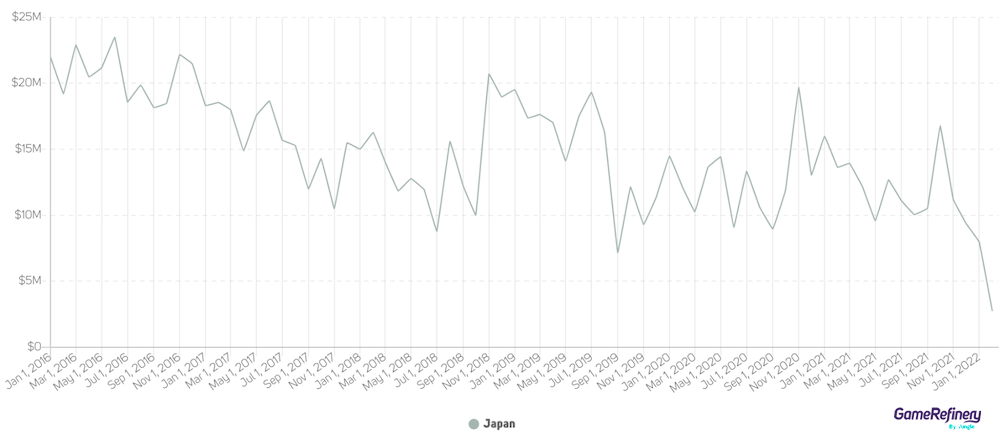
In the US, the game has not performed as well at all. There could be a multitude of reasons why this is the case: maybe the brand is not interesting enough for the Western audience, or maybe the character selection is just too overwhelming for a regular player. The puzzle levels are uncommonly long, and the gameplay is a bit frustrating at times, which might alienate some. In comparison, a Japanese Puzzle RPG that has performed well in the US and Japan alike is Dragon Ball Z Dokkan Battle. Dragon Ball Z is a familiar brand in both markets, and the game has rather accessible core gameplay.
Lastly, the collaboration events seen in Puzzle & Dragons are very Japan-specific. Many of the manga series that are featured in the collaboration gachas are not necessarily familiar to the larger audience and hence not that relevant to them.
What is Puzzle & Dragons like?
Puzzle & Dragons is, first and foremost, a Puzzle RPG. The game features match3 mechanics, where you move a single orb across a board trying to make as many combinations as possible in one sweep. The board can be affected by various effects caused by the enemy or the player’s own characters. The goal is ultimately to bring the enemy’s HP down to zero. The core gameplay requires slightly more skill and strategy than your regular match3, giving the game a midcore feel.
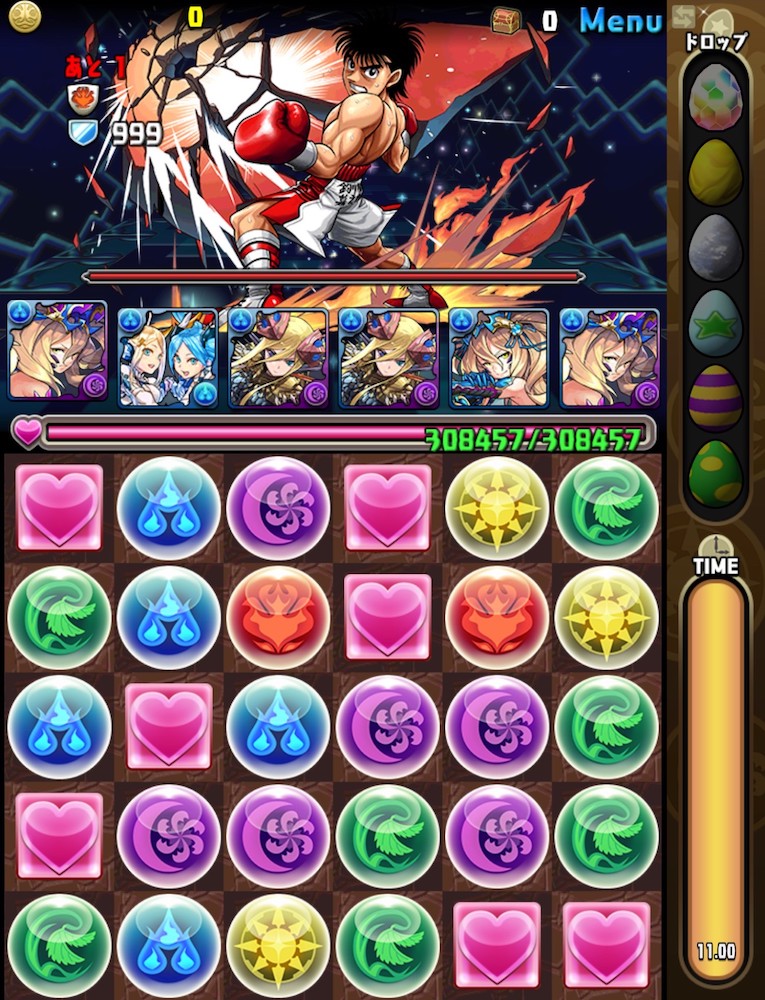
The player brings a team of characters to each battle, and each combo affects the damage the player’s characters deal to the enemy. Each character has skills that either deal damage to the enemy, affect the board in some way, or provide boosts or heals for the whole team. A huge part of team composition is to choose characters that synergize with each other the best. In other words, just choosing the characters with the most attack power is usually not enough for later stages of the game, but a lot of strategizing is involved. The good old internet is full of different team composition suggestions that players can try to copy – only limited by their gacha luck. Character upgrading is a major part of the game, and there are multiple ways of making the characters stronger.
Puzzle & Dragons has in no way been immune to power creep. Making the characters more and more powerful has led to a situation where a lot of the event content has had to be made so difficult that it can not be completed with a regular, haphazardly made team. This is good for those seeking a challenge, but for a more casual player, it might not be as motivating.
All in all, the gameplay is very satisfying when mastered, and especially in the more challenging stages, the game really shines. It is arguably also the game’s biggest downfall: it is not necessarily very beginner-friendly in terms of content and seems to cater more to players that have already played for years.
How the game has changed over the years
Puzzle & Dragons has relied on its recipe for success for a long time, but as the competition has inevitably become tougher, the game has had to answer to it as well. Hence, there have been some changes in-game that might have maintained Puzzle & Dragons above the surface – or led to its decline in ranks.
Upgrading
The game has really built upon the character progression aspect throughout the years. The character upgrading was initially very simple with straightforward level-up mechanics, evolving, and skill-level upgrades. It got changed gradually to a more complex system, where characters could evolve into various end-evolution forms, and the player had to choose which one suited their playstyle the most. Some can even be turned into weapons that can be equipped for other characters!
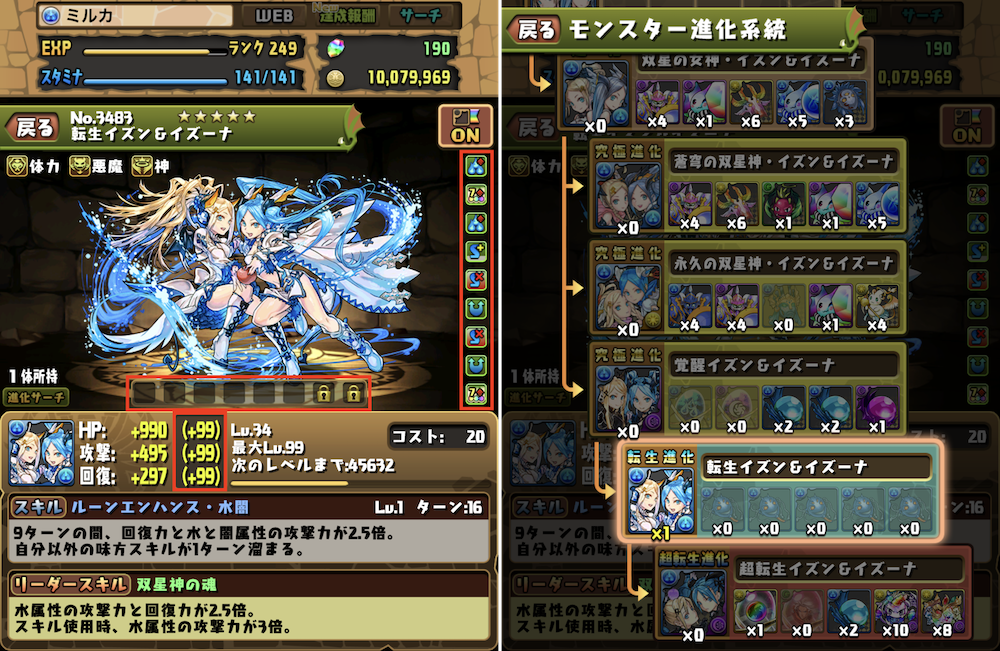
For a hard-core collector, this is a dream come true, but it might feel overwhelming for new players. A lot of time is spent reading a wiki and finding out which evolution is actually good and worth investing in – only to find out it has become obsolete by the time the materials for that evolution have been collected! On the other hand, boy, is it satisfying to finally get your favorite character fully evolved and see your team flourish when you get that perfect team synergy going. Ultimately this is definitely something that caters to the late-game player more than a person just starting their journey in Puzzle & Dragons.
Lately, the newest ultimate evolutions have been given a light animation, which is an upgrade for the admittedly a bit outdated still 2D pictures the players have been used to. All in all, the art in the game has improved throughout the years. While the general outlook of the game is still the same as when the game was launched, the characters look much more vibrant and stylized than before, especially in their more evolved forms.
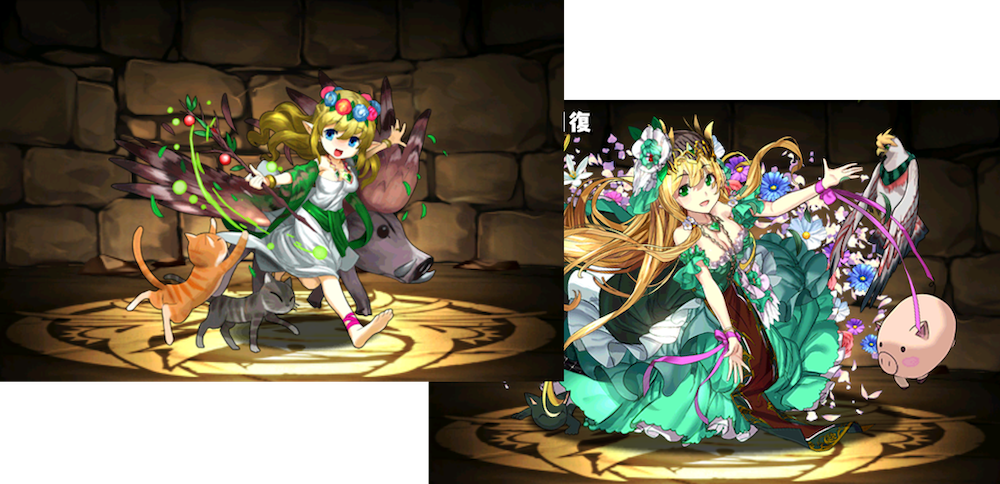
Monetization
The Japanese mobile games market has counted on gacha mechanics for monetization for the longest time. Over 92% of the top fifth of mobile games in the Japanese market have implemented some kind of gacha mechanics. However, the market is seeing some variety in this regard, and Puzzle & Dragons, too, has started to experiment with new monetization schemes.
Character collection elements have been vital for the game since its launch. The character selection has become a massive monolith with thousands upon thousands of collectible monsters, dragons, deities – and collaboration characters. During the course of its existence, the game has hosted over 150 collaboration events with brands like Final Fantasy, Duel Masters, Hello Kitty, Attack on Titan, and Marvel, to name a few.
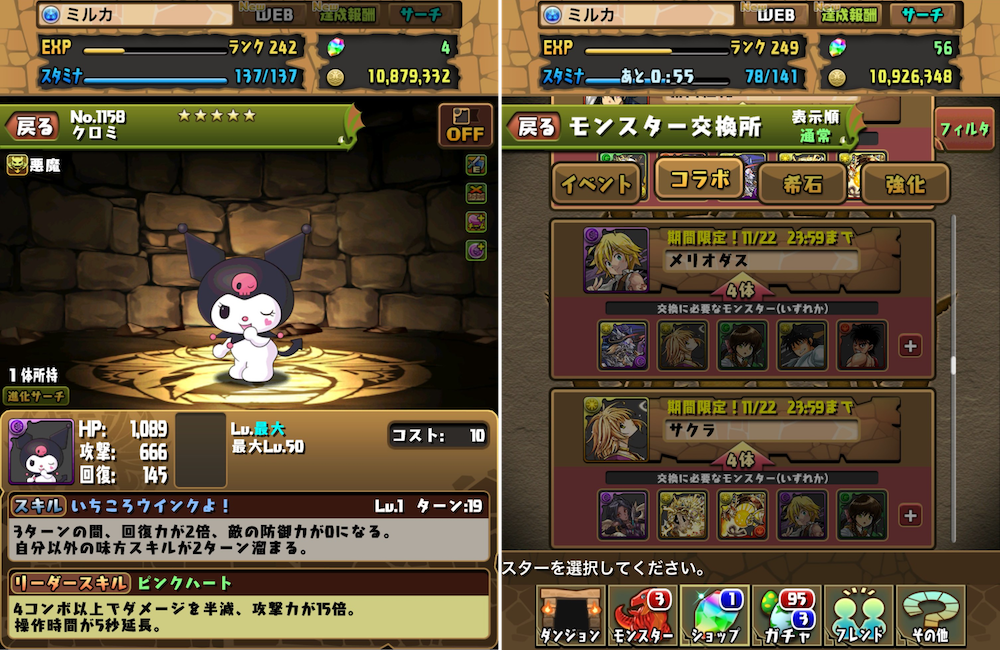
Characters can be collected from various places: farming dungeons hoping for character drops, purchasing them from shops, or – mainly – through gachas. Gachas can be quite impactful in Japanese mobile games. For example, in Puzzle & Dragons, a gacha that showcased the winners of a character popularity vote generated a massive spike in downloads in 2018. Another similar vote was arranged in 2020, again with good results. Even today, gachas with a favorable selection tend to move the masses.
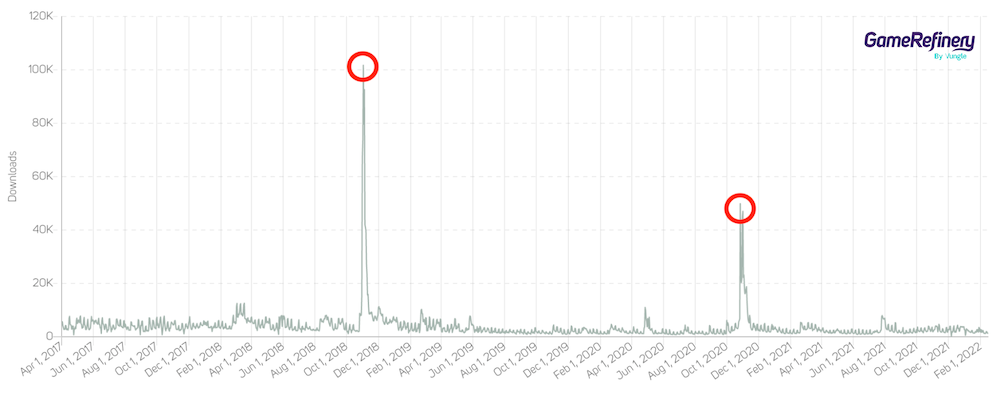
While the largest download spikes of recent years can be dated back to significant gacha events, Puzzle & Dragons’ interesting aspect is the fact that the game is VERY generous with free premium currency gifts. The player is practically showered with currency and free gachas, and it almost feels like the game is not primarily monetizing with that at all. However, with new monsters dropping left and right and evolutions requiring more and more materials, the player is frequently faced with the bottleneck of having no inventory space, which can be solved by – you guessed it – purchasing more inventory space.
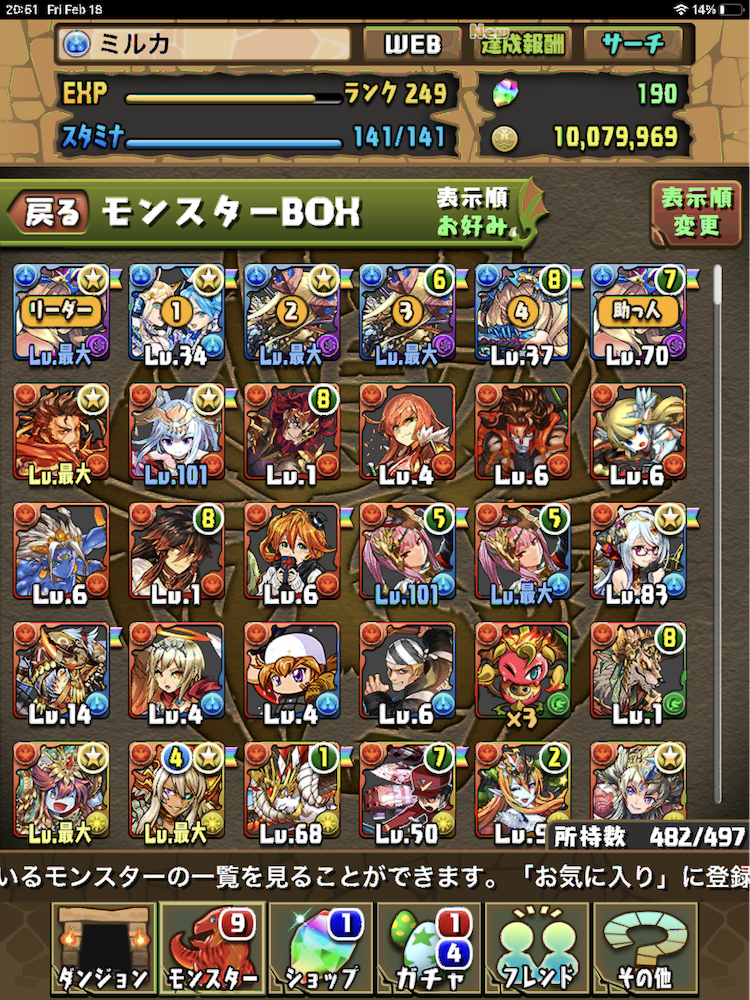
Stamina used for dungeons can be extremely costly as well. As many monsters needed as upgrading materials tend to drop from specific dungeons, and some even limited-time, the player soon finds themselves spending their currency on stamina refreshes. One playthrough of a dungeon can cost a whopping 50 stamina, so a player with a stamina pool of 100 does not get many chances before having to wait another couple of hours. As each dungeon also takes a lot of time to beat, failure is definitely not the desired outcome. This means that sometimes relying on retry mechanics (again with premium currency) does feel justified.
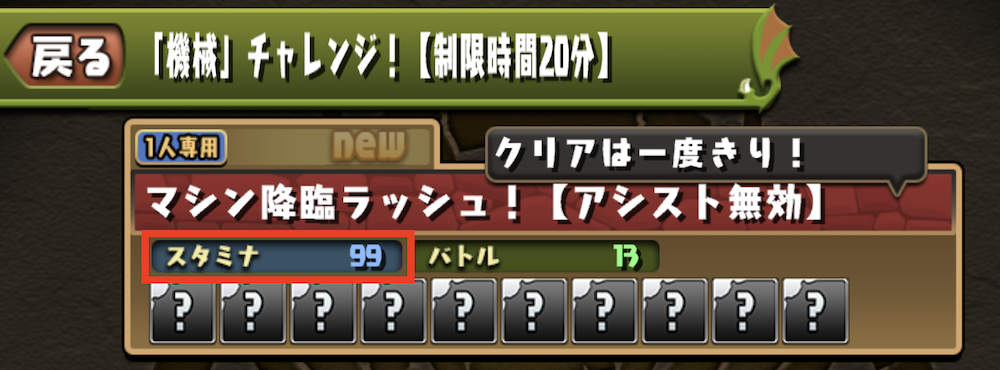
Stamina can also be refreshed in one other way – by watching ads. Puzzle & Dragons has recently increased its ad count, introducing an ad-linked gacha, inventory expansion, and a stamina refresh chance. Japan has historically been slow to adopt ads in their top-grossing titles, but instances have been increasing as of late, and more and more successful games have been introducing light ad monetization to the mix.
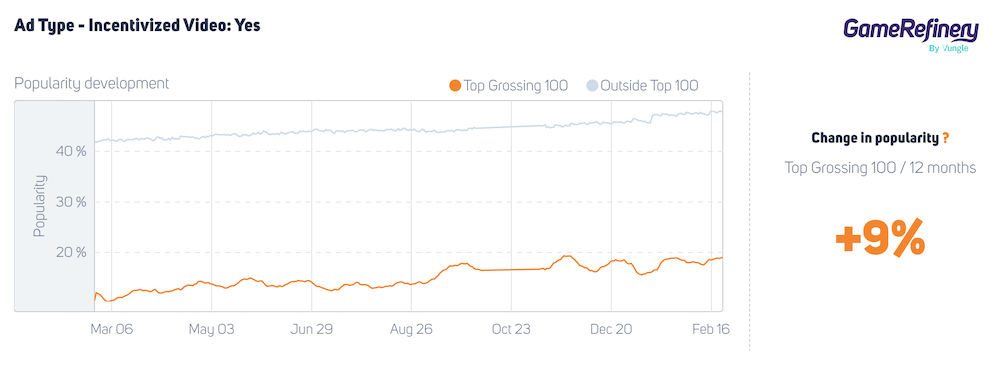
As is with Puzzle & Dragons’ case, the ads are usually linked to something tangible the player can get in exchange. It makes sense that the ad instances here are linked to three of the most valuable areas in the game.
Puzzle & Dragons seems to try to get the player to as high an account level as possible as quickly as possible. This is understandable because most early-game characters and dungeons are just too weak in comparison to most of the characters the player can get from the gacha. Leveling up an account also guarantees a stamina refresh and increase in team cost limit, so it’s vital for progression. Experience dungeons are very common, where an easy boss monster can be defeated for a massive amount of account experience.
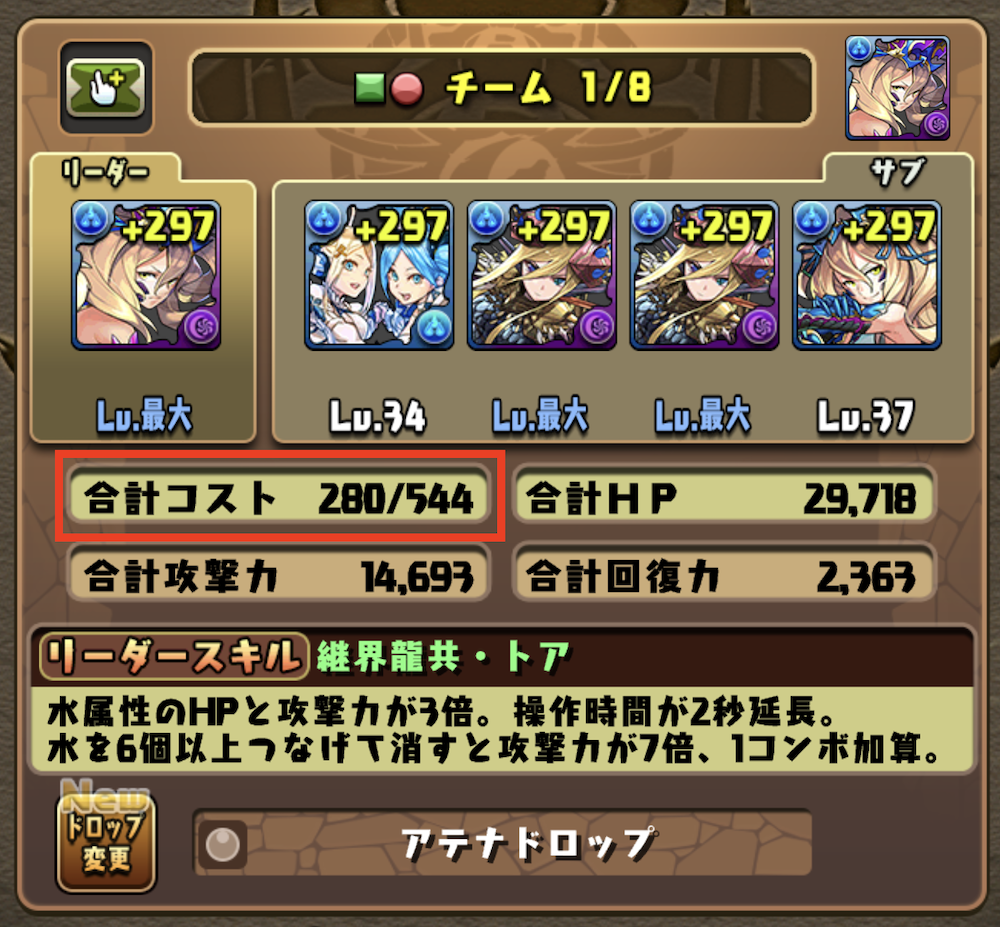
The newest addition for experience-hungry players has been the game’s new monthly subscription plan (first of its kind in Puzzle & Dragons), which multiplies the experience gained from dungeons for a month at a time, assisting in fast account level progression. Interestingly, contrary to what monthly subscription plans usually look like in the Japanese mobile games market, it does not give players daily currency at all.
Expansion of social elements and content
Puzzle & Dragons started as a single-player game with a rather straightforward progression, but it was bound to evolve over time. A lot of changes were made to the social aspects of the game, which at the beginning were limited to borrowing other players’ characters to battle.
One of the biggest improvements to the social interaction in the game was the implementation of co-op dungeons in 2015. The player could match with another to challenge a dungeon together and gain a lot more rewards than with regular solo play. Later on, another mode where players could form a team of three players was added as well.
Some were hoping for a good old PvP mode where the player could truly match their skills against others. A few spin-off titles experimented with 1-on-1 PvP, but the titles weren’t that successful. In 2021, a PvP mode called 8-player mode was finally released to the main game. As the name suggests, the mode is played against seven other players in a synchronous setting.
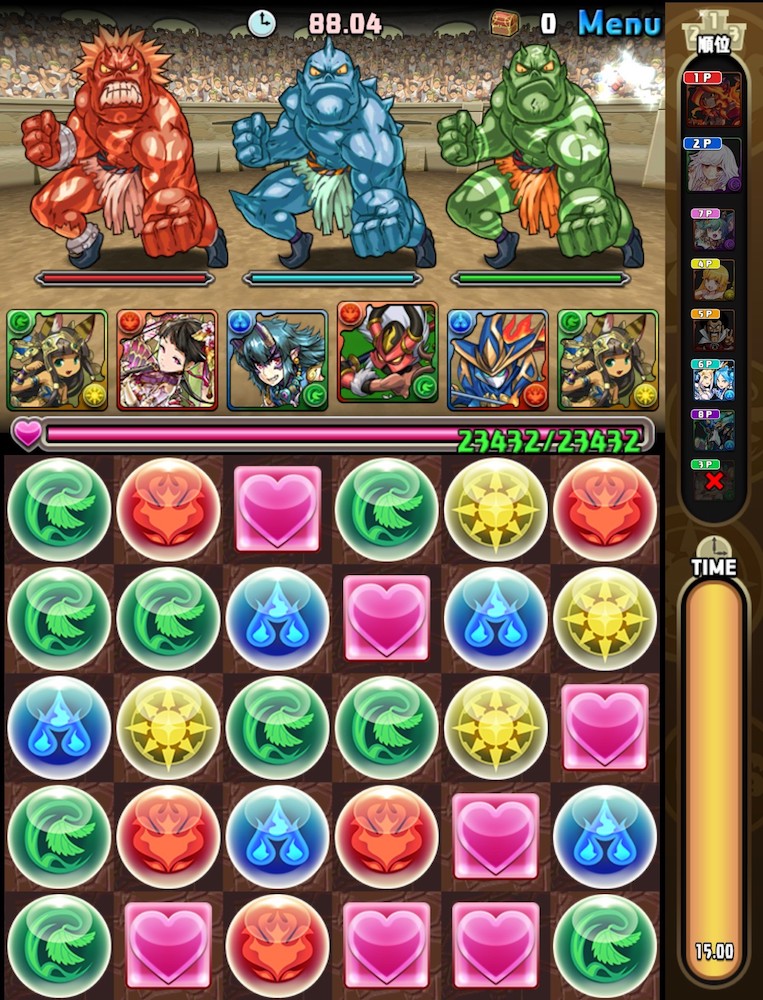
Notable about the mode is that it is not played directly against other people but against a series of monsters in a score attack fashion. The teams used in the battle are pre-determined instead of the player’s own, but the characters have been modified so that some of their skills can hinder opposing players instead of the monsters.
What’s next for Puzzle & Dragons?
GungHo Online Entertainment celebrated Puzzle & Dragons’ 10th anniversary with a new release by bringing the game to Nintendo Switch on February 20th. It is the good old Puzzle & Dragons with updated graphics, but there are some new elements as well – it enables co-op playing with a team of up to four people, and the PvP mode is divided into local and international play.
The biggest addition must be the new Edit Mode, which enables the player to craft their own Puzzle & Dragons dungeon all the way from choosing the enemy monsters to selecting the background music. The self-crafted dungeons can be played by other players as well, which can make the game even more fun for those players who might have completed all the official content and want more challenge. Can this be something to be expected for the mobile version as well?
Indeed, what could lie in the future for Puzzle & Dragons? The game can bloat the characters to infinity and make harder and harder dungeons that newer players can’t realistically beat without years and years of playing… Or they could take another direction and let players themselves challenge each other. PvP is obviously one option here, and the Edit Mode function introduced with the Nintendo version sounds interesting. Of course, the pressure to keep the current formula might be strong as it has worked thus far, but will it be enough in the long (or should I say even longer) run?
While the game is already very feature-rich, it can always be spiced up a bit more. One idea could be collection-linked boosts, where you could get buffs for collecting certain combinations of characters. Another could be expanding the lore of the characters a bit by adding synergy boosts between characters that are somehow related to each other. Some story has already been implemented, so there are already signs of wanting to expand the Puzzle & Dragons universe within the game.
One of the things that lacks in Puzzle & Dragons almost entirely is social communication. People can add friends and join a co-op, but there are not many ways to actually converse with other players. A feature that has seen a lot of increase in the mobile game market, in general, is the guild feature, and I can’t see why it couldn’t be added to a game like Puzzle & Dragons as well. The sense of community and chances of showing off their hard-earned teams might make players even more invested in the game and keep it fun and engaging for them for another ten years.
If you enjoyed reading this post, here are a few more you should definitely check out:

